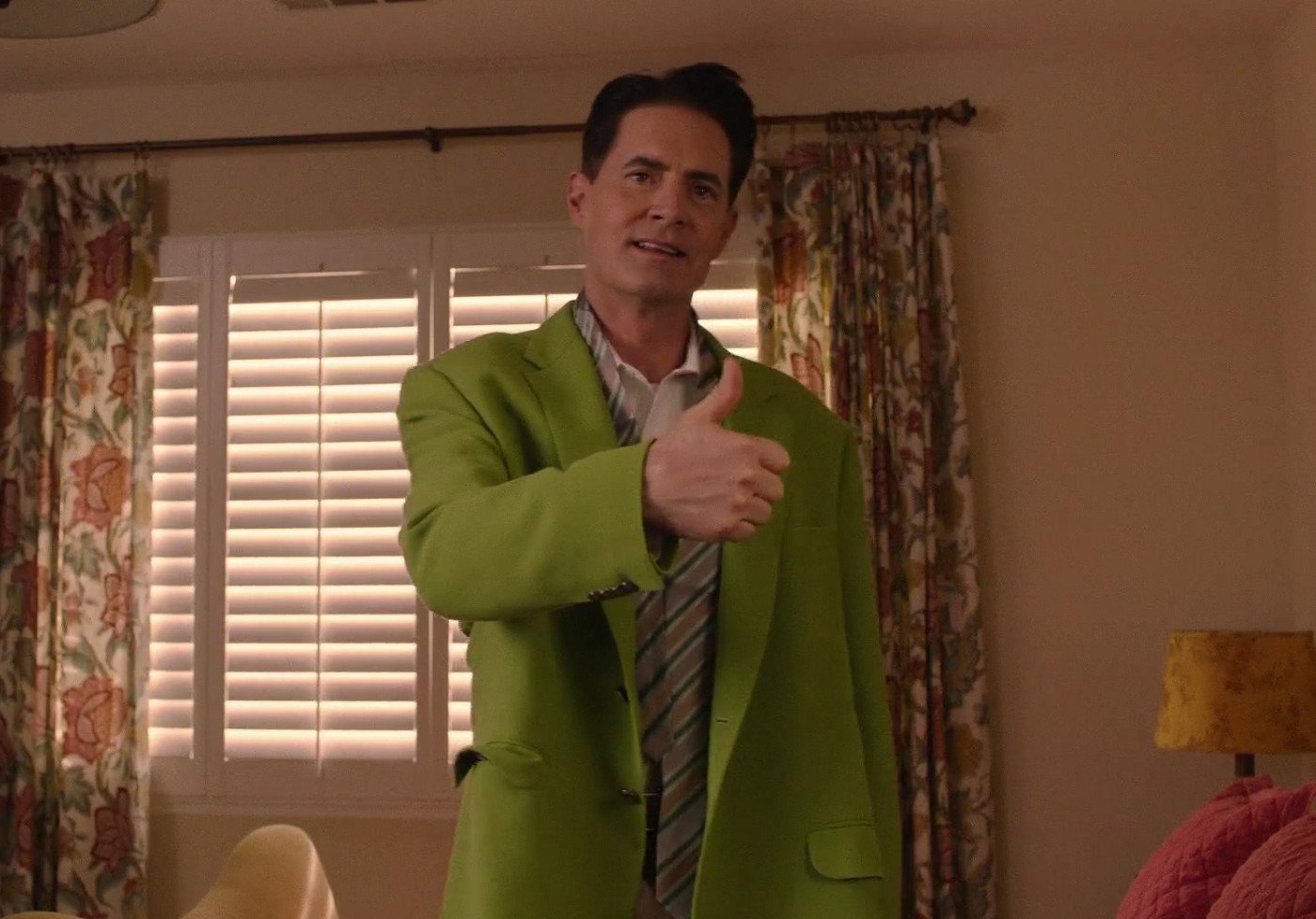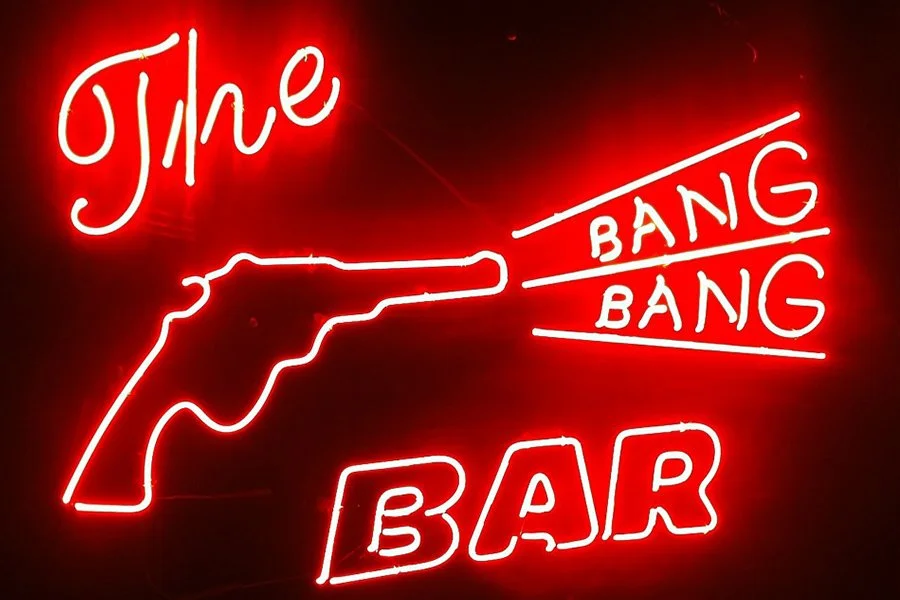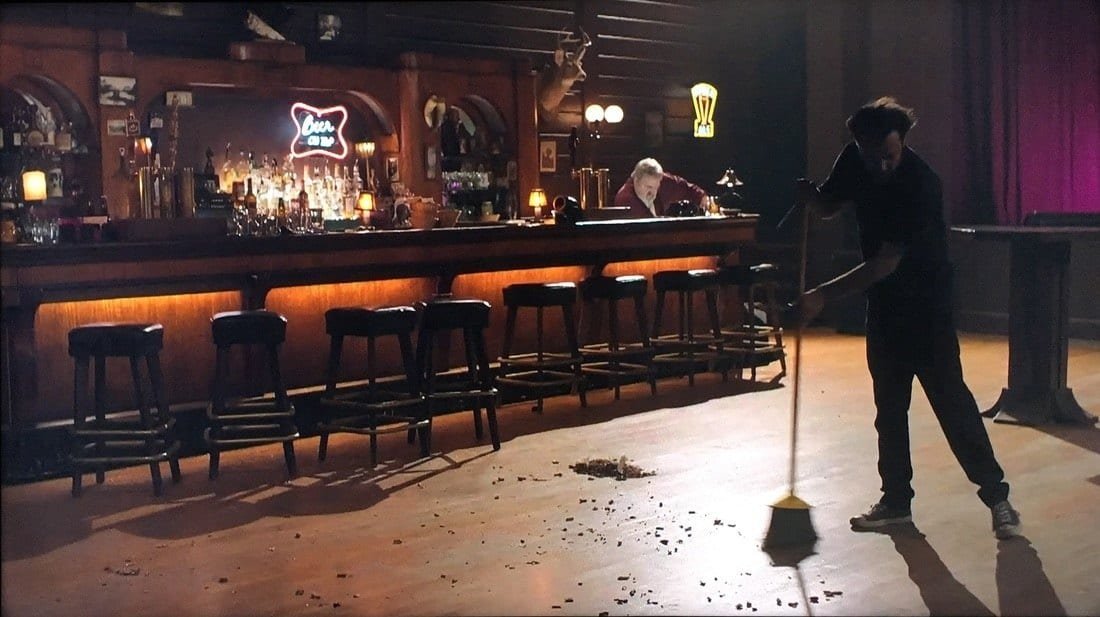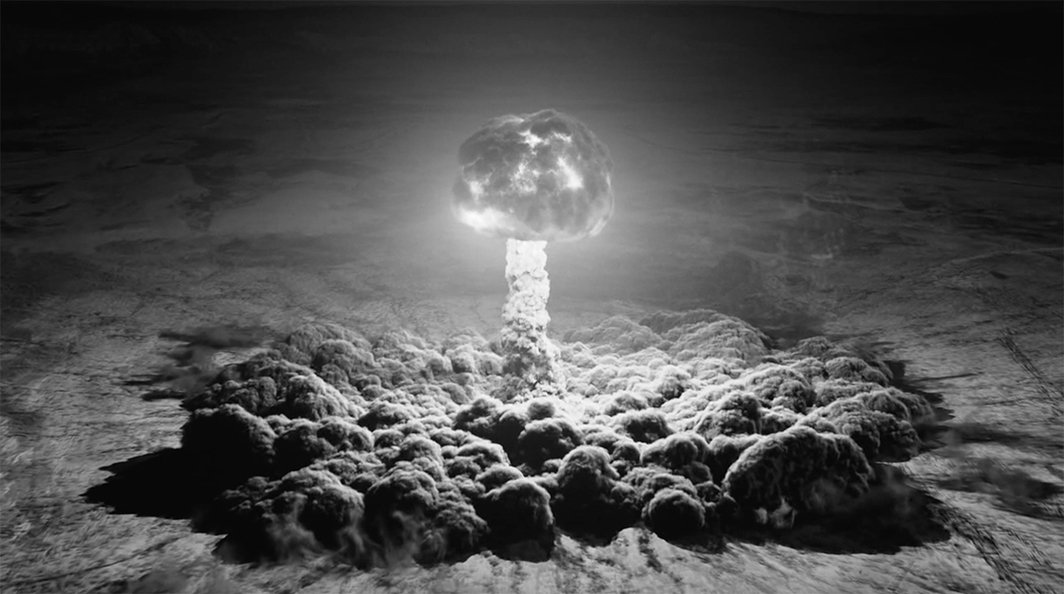THE REVEALER OF MYSTERY: Twin Peaks The Return Parts 1-8 by Craig Hammill
This is the third of a four part series looking at David Lynch’s & Mark Frost’s 45+ hour masterwork TWIN PEAKS which comprises two network television seasons that ran on ABC from 1990-1991 (Part 1), a 1992 feature film and scenes cut out from that feature (Part 2), a 2017 limited Showtime series Lynch considers a feature film in 18 parts of which we’ll discuss Parts 1 - 8 (Part 3, today), then Parts 9-18 (Part 4).
Twenty five years after the at first maligned, now celebrated David Lynch movie Twin Peaks: Fire Walk With Me (1992), David Lynch and Mark Frost returned in 2017 to Twin Peaks with their 18 hour Showtime limited series TWIN PEAKS: THE RETURN. Though no one had expected it, they had basically promised us they would do this in both the very first 1990 episode (Season 1 Episode 1’s European pilot), the 1991 Season 2 finale, the 1992 feature film, when Laura Palmer tells FBI Agent Dale Cooper in the Red Room “I’ll see you again in 25 years”. At the time, everyone mostly thought this was just some Grade A level David Lynch weirdness.
It turned out to be a promise.
This itself was the equivalent of a batter who points out they’ll be back in 25 years to hit a grand slam, then returns 25 years later and hits that grand slam at the appointed time.
Although the series was released one hour per week across the summer of 2017 (the release strategy itself a callback to network television and pre-streaming cable), Lynch and Frost viewed the work as a unified feature film broken up into 18 parts. Therefore, we’ll refer to each hour as Part 1, Part 2, Part 3, etc.
TWIN PEAKS: THE RETURN somehow managed to both exceed and frustrate expectations. While many of the elements of the TV show and feature returned in force including Laura Palmer, the Red Room, the Twin Peaks Sheriff’s Office, the Bang Bang Bar, most of the original cast members (even Leland Palmer!), most importantly Kyle Machlachlan playing FBI agent Dale Cooper (and at least four other different parts), TWIN PEAKS: THE RETURN made it clear in Part I that this would be an expansion, a development, a progression. Instead of just a murder in Twin Peaks, the series would take place all across the United States. There would be a number of murders, deaths, unexplained phenomenon. There would even be a number of different tones including thirteen episodes in which Dale Cooper would be stuck in the body of Las Vegas insurance executive Dougie Jones.
From the very beginning, TWIN PEAKS: THE RETURN (which ultimately must be viewed as a deeply ironic title but more on that in our final post) let us know the show would defy expectations, be resolutely anti-nostalgic (almost as a kind of mission statement), work to take even greater chances than the first two seasons and feature did, YET be satisfying.
There would be tremendous expansions on Twin Peaks lore including the starring role of Laura Dern as Diane, Dale Cooper’s unseen assistant in the original series, who appears here as an angry, vital woman who clearly feels deep emotion for the missing G-man. We also get a tremendous expansion of the other world that seems to not only contain the Red Room but also a strange citadel in the middle of an infinite ocean, an unsettling room with a big fire with an eyeless woman that appears to be partially floating in infinite space. An examination of the evil we know as “Bob” and “Judy” stretching back to the 1940’s. . .
Co-writer/director David Lynch (who turned 70 during the shoot) not only directed every single part, he also starred/appeared in most of THE RETURN as FBI Director Gordon Cole (reprising his beloved role from the original series). And Lynch worked to cast actors who had worked with him throughout his entire career. Thus everyone from Eraserhead’s and The Amputee’s Catherine Caulson (the Log Lady) to Machlachlan and Dern (Blue Velvet, Wild at Heart, Inland Empire) to Everet McGill (Dune) to Balthazar Getty (Lost Highway) to Harry Dean Stanton (The Straight Story) to Naomi Watts (Mulholland Drive) has key roles.
Lynch extended this approach to making sure elements of his style from every phase of his career made appearances including one Part (Part 8) that played in the same kind of beautiful inky industrial black and white as Eraserhead and The Elephant Man yet felt like nothing any of us had ever seen.
Ultimately, this writer feels that TWIN PEAKS THE RETURN is David Lynch’s summation piece. Like Akira Kurosawa’s RED BEARD (even more than RAN), Rainer Werner Fassbinder’s BERLIN ALEXANDERPLATZ, and Ingmar Bergman’s FANNY & ALEXANDER, David Lynch poured everything he had (and clearly pushed himself to give even more than that) into TWIN PEAKS THE RETURN. The result is, in this programmer’s opinion, the greatest movie of 2017 and one of the greatest features of the 21st century.
Lynch, at his best, has used cinema as a way to explore, question, express some of the most difficult thorny philosophical, spiritual, personal questions that bedevil existence. And in TWIN PEAKS: THE RETURN, the sum total effect is almost overwhelming: an incandescently UNSENTIMENTAL, ANTI-NOSTALGIC cinematic work that expressly unsettles by trying to do something wildly new and ambitious (rather than repetitive) in order to get at some of the deepest truths.
And at the heart of the deepest truths are more questions.
Today we talk about Parts 1 through 8 (the first 8 hours).
***
Parts 1 and 2 focus often on a story occurring in New York City where a young man appears to be hired just to stare at a strange glass box. A young woman appears to deliver coffee. They flirt. They break the rules. They begin to have sex. And then suddenly the box comes alive and some very unsettling creature comes out and kills them both.
At first, this storyline feels a lot like Lost Highway and Inland Empire in its “who’s watching me” hook. Yet it was only during this second viewing that I realized possibly Lynch and Frost were continuing their meta-conversation on medium. In Seasons 1 and 2 of Twin Peaks, there was the hilarious soap opera INVITATION TO LOVE everyone watched. Then the movie TWIN PEAKS THE RETURN begins with TV static and an ax getting buried in the TV, announcing basically the rules of TV are gone, this is a movie now.
And thus TWIN PEAKS THE RETURN starts with a clear acknowledgement that we’re now in the age of the internet. What’s fascinating is that there are cameras everywhere around the glass box LOOKING BACK at the couple. Yet they don’t think those cameras can do them any harm. They forget they’re being watched. Then the Glass Box comes alive and kills them.
While I would never presume to know exactly what Lynch and Frost meant with this opening storyline, it now seems to be a continuation of their conversation on how the medium affects the message.
Las Vegas, New Mexico, the Dakotas, New York City, Philadelphia, the Northwest…
Part 1 also sets all the key elements of the TWIN PEAKS: THE RETURN template. It actually is very careful (if you know what’s coming in Parts 2-18) to lay out the entire feature film. We jump to different parts of the country. Not only do we return to Twin Peaks (which is a joy) but we also spend a lot of time in the Dakotas, Las Vegas, New York City, Philadelphia, etc. Lynch and Frost used Twin Peaks as a microcosmic examination of America and familial psychology and evil and existential anguish. Here the subject is all that AND the state of America.
TWIN PEAKS: THE RETURN, as with almost all of Lynch’s other work save THE ELEPHANT MAN and DUNE, is resolutely American. But here Lynch is very clear to announce that this will also be an examination and interrogation of America. In fact, they were all probably interrogations.THE RETURN ultimately implicates all of America in a way. Not in a didactic manner. But it does clearly seem to be saying that there are some original sins and original evils on America’s conscience. And we’re heading to reckoning.
The Lost Highway resonances echo even more when a few parts later we’re introduced to high school principal Bill Hastings (Matthew Lillard) who appears to have no memory of horribly murdering the woman with whom he was having an affair. The meta-theme Lynch has sometimes revisited of individuals being unaware (or willfully ignorant) of the equal parts evil and good within them expresses itself all over THE RETURN. Once deeply problematic people like Benjamin Horne and Bobby Briggs now seem to actually be trying to do their best to be decent. And once deeply decent people like Special Agent Dale Cooper seem to be struggling with dopplegangers and evil inside them.
In fact, this core notion-that we are all mysteries- multi-faceted beings who must acknowledge/confront our ambiguities or be the perpetual victim of them-is at the heart of Lynch and Frost’s focus on Special Agent Dale Cooper. Though Cooper in many ways (through the very end of Part 18) will retain his core decency, it is clear that even he is much more complicated and conflicted then we would want.
And what about Dale Cooper? We actually spend A LOT of time with Cooper in Parts 1-3 in the Red Room where he’s been trapped for 25 years, trying to escape. When he finally does escape, the forces of evil (represented by his doppleganger, the evil Mr. C (also played by Machlachlan) refuse to return to the Red Room. Thus the first expectation is frustrated. Evil is often as strong as good. Entropy is often as strong (if not stronger) than construction. But neither can fully defeat the other. Mr. C wants to destroy Dale Cooper. Dale Cooper wants to escape back into the living world. Neither fully happens.
In fact, Cooper comes out of an electrical socket and takes over the body of oafish Las Vegas philanderer Dougie Jones.
Yes, Dougie Jones. This storyline which everyone thought would only last a few parts ends up being one of the 2 or 3 MAJOR STORYLINES of THE RETURN. And many people’s reactions are often the same. The first time you see THE RETURN, you get to Part 6 and begin wondering, okay, how much Dougie Jones is there?
When you see THE RETURN again, you look forward to the Dougie scenes the way you’d look forward to your favorite meal or family member. They are pure joy. Pure good.
It is as if the goodness of Cooper is getting examined through the even more childlike pure goodness of Cooper inhabiting Dougie.
The Dougie Jones storyline, which includes Naomi Watts hilarious, fierce, equally sincere wife Janey-E Jones, and their son, Sonny Jim also points at a kind of Lynch interrogation of his own autobiography. Lynch has always been up front that his work comes first (the FBI Agent Dale Cooper side) but he has also, from all reports, worked to be a stand-up father, and deeply values his own parents’ and upbringing (the Dougie Jones side). The struggle, dynamism, conflict in Lynch’s own life between these two sides seems to get expression here.
This really struck this programmer when Dougie sees his son, Sonny Jim, waiting in the car, and is so moved, he cries. I didn’t notice that before. Now as a parent, the sense of marriages that work and marriages that don’t, parents who strive to do right and parents who can’t, is hard to miss. It’s in almost every frame of THE RETURN.
Also, once you know that Cooper as Dougie will go on until Part 16, you are better able to enjoy just how often Lynch does have Dougie realize that he is Cooper. Dougie’s love of coffee, badges, case files. . .it’s all there.
There are also a number of other rhymes, innovations, couplets in Parts 1-8 that put THE RETURN in direct dialogue with all TWIN PEAKS that has gone before. There are now new generations who live in Twin Peaks including Shelley and Bobby’s daughter played by Amanda Seyfried who does cocaine and supports her deadbeat Boyfriend with money she borrows. While this storyline never really goes anywhere, it doesn’t need to. It’s enough to acknowledge that each generation has to make its own mistakes. Each generation produces a new Laura Palmer. Each generation is unable to help the next generation avoid messing up. And this lack of resolution (a key theme going forward), this perpetual conflict, is an intrinsic part of existence. We each must learn all these things ourselves through experience.
We get beautiful dreamy musical outros at the end of every Part. All taking place on the Bang Bang bar stage, Lynch uses these outros to celebrate music, bring things to a reflective moment, assert the primacy of music (another key element of his style). In fact, Lynch did his own sound design on THE RETURN (!!) thus asserting how key sound and music are as components of his cinema.
Numbers (a key fascination of Lynch’s) appear all over THE RETURN. Sometimes in a very cheeky way. When Cooper sees the electrical outlet in Part 3, it says 3. When he goes through it, it says 15. Now maybe Lynch meant something completely different by this but it is sort of funny that Cooper becomes Dougie in Part 3 and then moves back to being Cooper again in Part 15. We also see a lot of 253 in THE RETURN, the number of completion (2+5 = 7, Lynch’s lucky number, 7+3 = 10, the number of completion). These numbers feel like subtle marks to let us know that Lynch really is summing up here.
There’s also the meta-theme of slowing things down, frustrating expectations, yet going to deeper contemplative spaces (which will be key in our discussion of Parts 9-18). Most famously in the first 8 parts, part 7 ends with a four minute shot of a dude sweeping. Little do we know (unless we’ve already seen THE RETURN all the way through) that these moments, shots are key preparation for the final hour.
We also get some new elements of Twin Peaks lore. Whereas Seasons 1, 2, and the feature were obsessed with Dopplegangers, Season 3 introduces “manufactured humans” who turn out to be imposters (represented as little orbs as the bodies disappear in smoke). Weirdly this feels like a biting critique of who we’re becoming as Americans. Whereas before, we might have to contend with an evil doppleganger, now some of us are just hollow husks, automatons.
Death and sickness also hover over all of THE RETURN. Catherine Caulson, the Log Lady, filmed all her scenes early in the shoot because she was dying of cancer. She died a week after she wrapped. Many of the actors from the original series and feature had already passed on-Jack Nance, Frank Da Silva-and many would die after their work on THE RETURN wrapped-Miguel Ferrer, Warren Frost, Robert Forester. Lynch and Frost end each Part with a dedication to one of these actors or performers. However, unlike the death obsessed works of other older moviemakers, Lynch has a more engaged, vital, resonant, conflicted approach. Death has always been a part of life. We know this from some of our very earliest years. So it makes sense that it occupies a key portion of any storytelling (as it does here).
And finally, finally. . .Part 8 “Gotta Light”. Trying to write about Part 8 is like trying to describe Beethoven’s 7th Symphony with flash cards made for three year olds. It just ain’t gonna cut it.
After developing storylines and tones for the first 7 hours and 10 minutes (since Part 8 does begin with some more development of the story), Lynch and Frost suddenly cut to a Nine Inch Nails performance at the Bang Bang Bar (the first hint that something is going to be very different about this part since the music numbers usually occur at the end) THEN cut to Kyle Machlachlan’s Mr. C rising from the dead. . .then cut to the Trinity test explosion of the atomic bomb in 1945. In black and white.
Nothing has prepared us for this. And when we’re thrust into the smoke of the explosion itself and into a kind of Stanley Kubrick 2001 Stargate journey where a being vomits up existence and Bob is born and avant garde filmmaking that would make Stan Brakhage beam with pride take over, we are left gasping the biggest WTF ever to be gasped.
I remember when I saw Part 8 for the first time in 2017. I leaned forward when the Woodsmen all gathered around Mr. C and begin to revive him. I never leaned back. For 50+ minutes, I watched filmmaking unlike anything I had ever seen. This may be the greatest hour of television ever produced. Because from here we go to that Citadel in the ocean of consciousness, Laura Palmer, as a kind of counter-balancing force of good is introduced into the world (via a golden orb and a transcendental movie screen). But finally, we get these strange Woodsmen appearing in 1945 New Mexico, killing people, then chanting a cryptic poem into a local radio station mic “"This is the water, and this is the well. Drink full, and descend. The horse is the white of the eyes, and dark within." At this point, a charming adolescent girl who has just kissed a boy falls asleep (as does everyone else listening to the broadcast) and a frog moth seemingly born out of the atomic explosion crawls into her mouth. CREDITS.
Yes. I write it. But you have to see it.
What does it all mean? Lynch will never tell. But if you’ve watched TWIN PEAKS (and especially when you finish THE RETURN), you do sense that the Girl is Sarah Palmer, Laura’s mother. You do realize that maybe this is (as audience member Hugo Reeve’s pointed out astutely) the birth of Judy, the other evil, just as Bob is an evil.
But then what is that saying? That both Laura Palmer’s parents-her Father and Mother-were a kind of conflation of good and evil. And the product was Laura.
And suddenly we’re back in ERASERHEAD territory. Lynch has returned us to the beginning. The family itself, creation and destruction itself, is all inextricably tied to existence beyond our understanding. The nuclear family and the nuclear explosion. The small town American family and the American community writ large.
But it’s oh so much more mysterious than that. As Parts 9-18 will prove. . .
Craig Hammill is the founder.programmer of Secret Movie Club.












